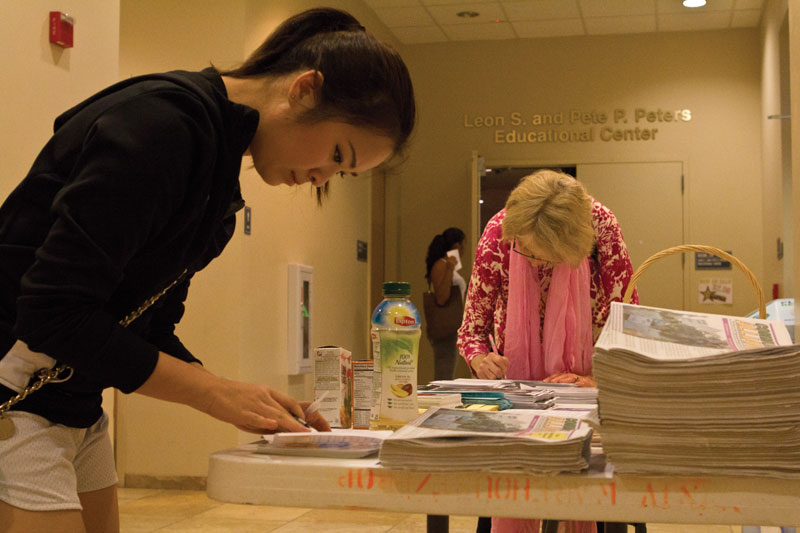
Roe Borunda / The Collegian
“Mao’s Last Dancer,” an Australian film directed by Bruce Beresford, was shown last Friday as part of CineCulture’s focus to bring cultural awareness to campus through film and discussions.
Edward EmanuEl, drama professor at Fresno State, playwright and winner of several awards, led the post-screening discussion at the Peters Auditorium.
The screening attracted students and members of the public, both young and old, to follow the journey of a ballet dancer.
Based on an autobiographical book by Li Cunxin, his life story and journey as a ballet dancer beginning in his native China are depicted in the film.
As a child, Cunxin was selected to become a ballet dancer by a single motion from his teacher. From that point, his life changed. Later, Cunxin was scouted by an American ballet company to travel to the United States where he became a symbol for his people in China and made a mark in ballet as a world-class dancer.
EmanuEl chose to share this film with the audience because of its “tremendous social message,” he said. “Just one gesture changes a boy’s life from poverty to eventual riches and great success and artistic accomplishments.”
He also expressed that CineCulture wanted to kick off with a film with a strong cultural influence and a strong artistic communication.
EmanuEl said this film is a “film that changes the world in terms of the way people see it, the way we saw China, and the way we see China. China is our essential partner in the world. There are two superpowers in the world today, one’s China and one’s America, and we have to deal with them in strong ways, and this is a film that I think bridges that, and I think it’s a significant film.”
During the pre-screening introduction to the film, EmanuEl told the audience to compare repressive and open societies.
In Cunxin’s time in China, he is caught in the birthing of the Cultural Revolution of the 1960s, a time when leader Mao Zedong tried to eliminate western influence in the People’s Republic of China. It was a time when scholars were sent to re-education camps and books of Shakespeare were burned in the streets.
Breaking tradition and stepping away from his culture, Cunxin had to leave his family behind to fulfill the requests of the Chinese government to become a ballet dancer.
In the film, Cunxin is taken from his family in a peasant village in communist China to Beijing to dance with the Beijing Dance Academy, where he is later chosen to dance with The Houston Ballet company in America for a few months. This foreign land became a place where he learned to be free as a dancer and gained courage.
“Mao’s Last Dancer” shows the evolution of both Cunxin and China.
“You can see the actual cultural development in China in this film as well as Li’s, how they began to loosen up and see that the corruption of the west wasn’t as bad as maybe the corruption of the Cultural Revolution,” EmanuEl said.
During the discussion portion of the event, the audience asked questions and gave feedback of the film. Highlights of the discussion centered around the politics and economics. The film also brought up points of China’s evolving political status, economy and the realities of immigration policies.
An audience member asked if the speaker saw North Korea progressing, to which Dr. EmanuEl responded with a quick, “No, no,” because North Korea and China are very different. He continued to explained that China would realize that the real wealth was by “sucking us dry.” China has learned to export – he gestured to his articles of clothing and jiggled his pockets and said they are most likely imported products of China.
Audience member Dan left with a positive reaction to the film but also noted that it did not actually depict China at the time.
Yaseen was quick to recognize the discrepancies of the film that were brought up during discussion.
“The Cultural Revolution was in the ‘60s, and all of a sudden George Bush is coming in. I knew that, and then when the Cultural Revolution was going on there were no ATM machines and all that so I noticed all that.” But overall it he felt it was a good film.
This film is “a journey of a young man in the Cultural Revolution who rose through hell to get to heaven,” said EmanuEl. This film “is a very, very good example of why art can bring people together; how art can bring people together.”
“Everything is in a state of evolution. Nothing stays the same.” This is something EmanuEl wanted the audience to walk away with.
He said,“We’re all growing to the same point, we’re all coming to the same place together.”





